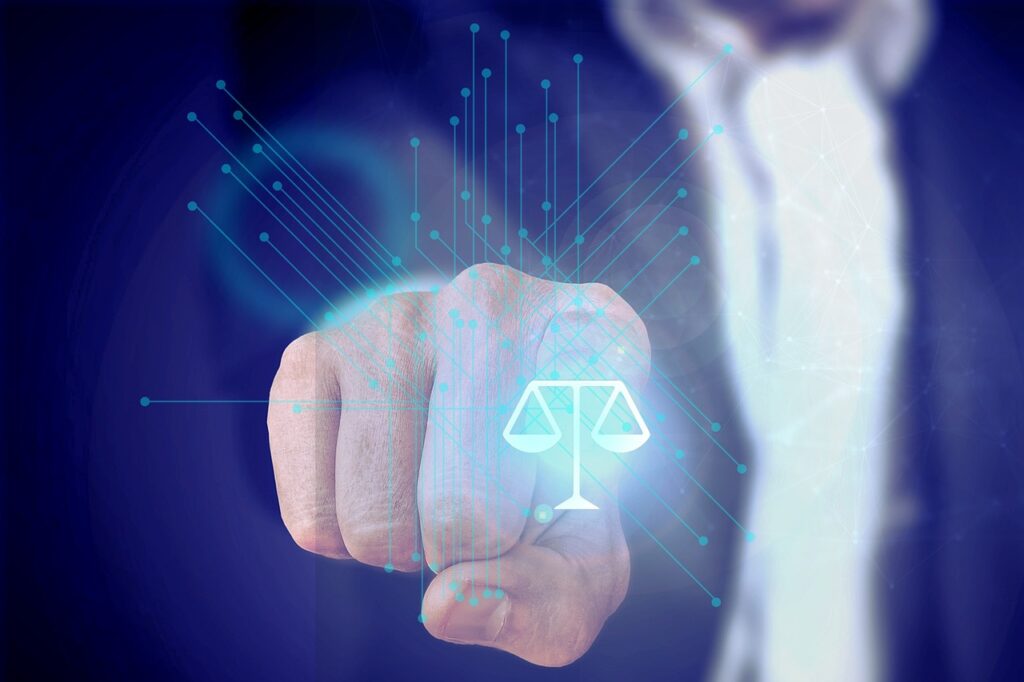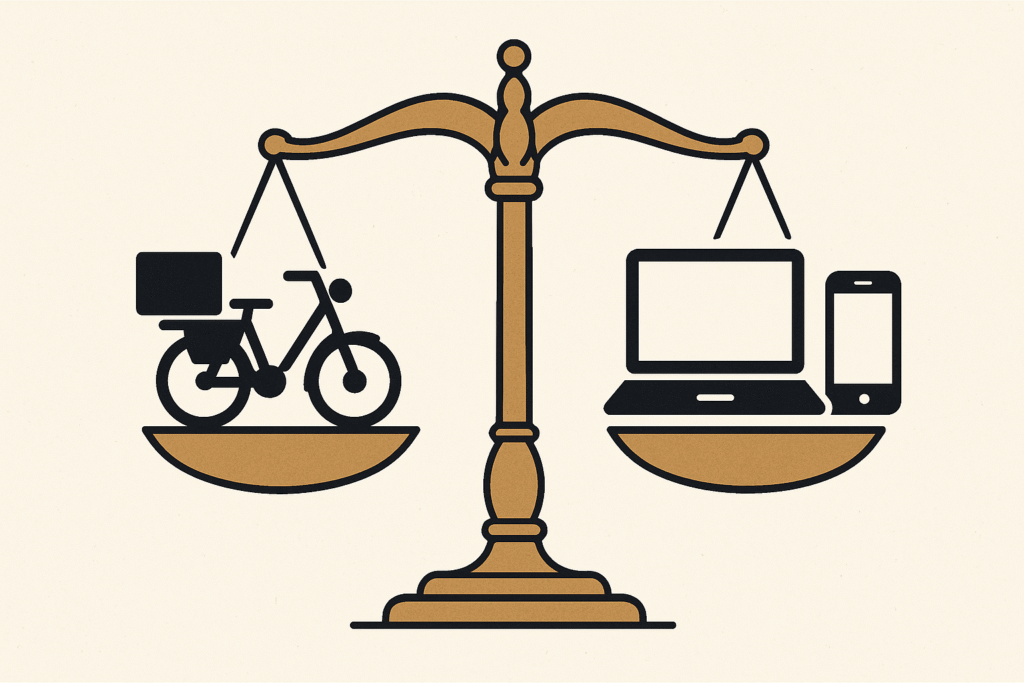Published On: November 3rd 2025
Authored By: Muskan Khatun
Department of Law, University of Calcutta
Abstract:
Digital Evidence is one of the crucial things in cybercrime. It not only helps in cybercrime, but it also helps in other cases. Digital evidence is presented before the court as proof of the crime. It generally includes those evidence which are stored in a electronic way. The digital evidence very much needed in the cybercrime. It generally admissible through Indian Evidence Act and now The Bharatiya Sakshya Adhiniyam and Information Technology Act. It plays a significant role in solving crimes also it has a role in forensic evidence. There are lot of cases regarding the digital evidence in cybercrime. But it is not free from challenges. It also faces many challenges and the government and judiciary tried to overcome these challenges. And the digital evidence in India is not a developed one it is developing till today. Now it becomes important at the present day.
Introduction:
It is important to know that to claim any defense from the court, one requires proper evidence. Also, under the Indian Judicial system, digital evidence plays a pivotal role in giving justice to both parties. Digital evidence is increasing all over the world in the present day. It includes mainly electronic media like computers, cell phones, the internet, etc. Digital Evidence is considered electronic evidence. But the admissibility of digital evidence depends on the jurisdiction and power of the court.
At present, cybercrime has increased all over the world. Cybercrime encompasses many illegal activities through technology, like harassment, online theft, and fraud. It not only costs financially, but it also makes those who are the victims of that crime. The Information Technology Act, 2008, deals with such problems and gives justice to the victim. But there are a lot of challenges in proving cybercrime through digital evidence. So, in order to overcome these problems, the agency must adopt various forensic tools. Make collaboration with various technologies, enforcing many new laws, etc., to enhance investigation in cybercrime and address the challenges.
What is Digital Evidence:
Digital evidence is mainly considered as proof or any information. Section 79A of the Information Technology Act,2000, prescribes the term Digital Evidence. It means, as electronic evidence, including storing it in any electronic media such as computer programs, video calls, pictures, etc.[1]
Digital Media is mainly stored in computers, laptops, and cell phones. It may be a picture, video, or audio recording. It does not require any handwritten document, and it also does not require any examination of reality and fingerprints from that document.
Need for Digital Evidence
Digital Evidence needs to be investigated and explored to determine the facts with the evidence related to any cybercrimes. The specialist persons are experts in performing the investigation and proving the crime before the court. Also, it is the detailed information collected through investigation that protects people from online bullying, harassment, and fraud. It also protects Intellectual Property Rights, Copyright Infringement.
Digital Evidence has a significant role in addressing cybercrimes. Through digital evidence, the facts are to be brought before the court, and the evidence may be any video recording, message in email, voice recording, and this evidence acts as proof before the court to prove the cybercrime. So, for these things, digital evidence is needed in the present era.
Admissibility of Digital Evidence in Indian Law
In India, the admissibility of digital evidence depends upon various laws that govern the courts, which are discussed below:-
- Indian Evidence Act, 1872
There are a lot of sections in the Indian Evidence Act that deal with digital evidence. Section 65B(1) grants the admissibility of electronic records. It includes an electronic record that is printed on paper, stored, recorded, or copied in optical or magnetic media produced by a computer. The evidence through such a thing can be brought before the court as proof.[2]
Section 65B(2) provides that the collected information in a computer must be regarded as valid in legal proceedings. It provides that the computer must be regularly used during the period in which the information is to be stored and produced as evidence before the court.[3]
Section 65B(4) provides that, when the information is brought before the court, it must require a certificate which is to be signed by an official who recognizes how the electronic record was produced.[4]
- Digital Evidence with reference to Bharatiya Sakshya Adhiniyam, 2023
The Indian parliament has introduced the Bharatiya Sakshya Bill, and the Bill has come into force on 25th December, 2023. This act replaced the Indian Evidence Act and added or altered various sections and rules. The Bill introduced new provisions regarding the admissibility of digital evidence.
Section 2(e) of this Act defines the term evidence, which includes two types of evidence: oral evidence and documentary evidence. Oral evidence involves those statements that are given electronically by witnesses in court, which helps in the investigation of the facts. Documentary evidence includes all documents, like electronic or digital records, produced before the court for inspection.[5]
Section 32 provides that when a court wants to know the laws of the other country, any statement of such law found in any book published by any authority would be considered relevant.[6]
Section 57 deals with the primary evidence, which includes the document itself produced before the court for inspection.[7]
- Information Technology Act, 2000
The Information Technology Act was enacted by the parliament in 2000. The main purpose of this Act is to give recognition to the electronic media as an important source of evidence. Thus, Sections 4 & 5 of this Act provide that—-
Section 4 of the Act provides that the information or any other matter shall be in writing or in typewritten or printed form.[8]
Section 5 of the Act grants legal recognition to electronic signatures, stating that the law requires a handwritten signature, which is satisfied if an electronic signature is affixed by the Central Government.[9]
Role of Digital Evidence in Cybercrime Investigation
Cybercrime is one of the important issues in India. It has increased day by day. Digital Evidence has a crucial role in investigating Cybercrime. Digital Evidence can trace the location of criminals. It also identified the emails of cyber stalking, fraud, online bullying, etc. Through this process, the evidence is stored in any electronic means and presented to the court. It acts as uncovering the evidence as proof in cybercrimes, data leaks, hacking, etc.
Significance of Digital Evidence in Protecting Intellectual Property Rights
Intellectual Property is an important source of income. So, it is essential to prove the ownership of the property, and it is the most significant evidence. Digital Evidence may be stored on any electronic media for not to infringe the right of the owner of the property. If any person infringes on the right of the owner, it will help to validate the originality of the work and protect the right of the owner. It also protects from unauthorized use of the work. It generally includes the work of artistic, literary, dramatic, performances, broadcasts, etc.
Digital Evidence In Forensic Investigation
Digital Evidence plays a significant role in forensic investigation. This term specifically means scientific evidence of investigation. It includes the physical evidence such as fingerprints, DNA, blood stains, weapons, post-mortem report, etc. A forensic investigation generally includes the crime scene where any fingerprints, footprint has to be found. But if any other things are to be found, like mobile or other electronic media in which any mail or video recording is present, these are considered as digital evidence. However, in India, digital forensic evidence is still growing.
Judicial Pronouncement of Digital Evidence
In Anver P.V. vs P.K. Basheer & Ors[10]., the case involved regarding admissibility of the electronic evidence. In this case, the appellant was alleged to have of an election dispute. The main object of this, is the admissibility of the electronic evidence. Here, a CD and a leaflet have been published, and the appellant said that it was a false statement about an election dispute. And the court required a certificate from him, but he failed to submit the certificate under Section 65B of the Indian Evidence Act.
The court judgment ruled that the electronic evidence is inadmissible as it failed to fulfill the conditions given in section 65B(4) of the Evidence Act, 1872. Thus, the electronic evidence is regarded as secondary evidence.
In Shafhi Mohammad vs The State of Himachal Pradesh[11], the case discussed the matter of the admissibility of electronic evidence. The appellant addresses electronic evidence as evidence, but he does not have the device. So it needs a certificate from the accused under section 65B of the Evidence Act.
The court ruled that electronic media can be used as evidence even if he does not own the device without a certificate. The court had replaced the requirement of Section 65B of the said Act.
Challenges of Digital Evidence
Digital Evidence may be important in cybercrime. But it faces several challenges also, which are as follows-
- The digital evidence is not permanent. It can be altered or destroyed at any time by the preparator. So, sometimes it is not regarded as proper evidence before the court.
- It has no origin, so it fails to keep its authenticity, as this is not physical evidence and has no signature by any official.
- The cybercrime is also committed internationally, so it creates a problem in the jurisdiction and law of the courts.
- Sometimes it fails to keep its integrity and making it difficult to prove that the evidence is reliable in the case.
The digital evidence may have several challenges, but it can not be forgotten that it helps a lot in solving any type of crime.
Conclusion
The digital evidence is widely increasing in the present time. For that, the court gives recognition of the digital evidence in any offence. The digital evidence may be regarded as secondary evidence under the Indian Evidence Act. But after considering its importance, the parliament replaced the Evidence Act with Bharatiya Sakshya Adhiniyam, 2023, making it as primary evidence.
On the other hand, it faces several challenges, such as tampering, destroying the evidence by alteration or addition of any facts. So, it is necessary to keep the evidence in a safe place and keep it unchanged to be presented as proper evidence.
References
[1] Information Technology Act, 2000 <075> https://www.indiacode.nic.in/.
[2] The Indian Evidence, 1872 ( Bare Act)
[3] Ibid
[4] Ibid
[5] The Bharatiya Sakshya Adhiniyam, 2023 (Bare Act)
[6] Ibid
[7] Ibid
[9] Information Technology Act, 2000
[10] AIR 2014 (10) SCC 473 [ https://indiankanoon.org>doc.]
[11] MANU/SC/0058/2018, https://updates.manupatra.com/roundup/contentsummary.




